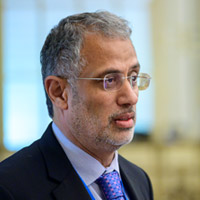
On reducing emissions without affecting kiln performance
The emissions of SO2, CO and NOx from both kilns and calciners can be reduced in existing plants or during a planned upgrade or fuel change (for example alternative fuels). The drivers for the formation of these species are well known as are the creation of the conditions which reduce them. However, an optimum is desirable so that kiln operation is not affected when emission reducing techniques are implemented.
In the presence of several non-linear and competing combustion and process parameters, it is difficult to arrive at an optimum without having to go through extensive and expensive trials. Instead, a fairly standard approach developed for the cement industry during the last 20 years and based on detailed computational models can be applied with pay-back of a few weeks. The constructed models of kilns/calciners, initially focus on combustion and process calculations, especially where these species are formed and reduced, followed by finding an emission reduction solution.
In this presentation, Cinar will present and discuss some case studies which highlight significant emission reductions. The company also discuss how the benefits of modelling-based solutions entail the minimum and only required alterations, providing large attractive Capex savings.
